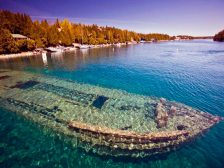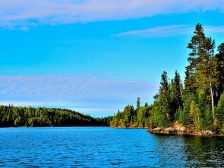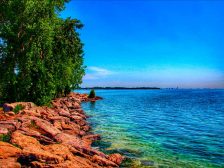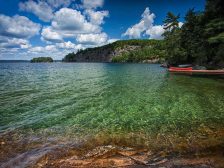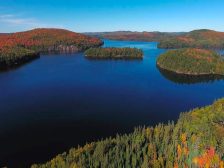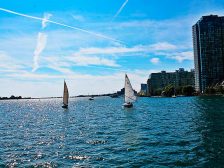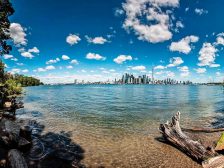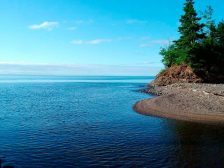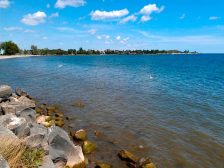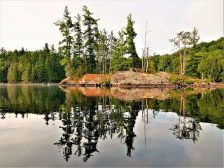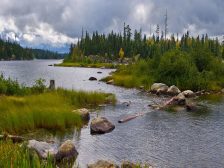Lake Ontario
(USA & Canada)
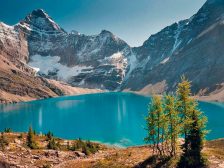 Geography: Lake Ontario is located in the USA and Canada. Among the lakes of the USA, Ontario is in the 5th place by its area. The Niagara River flows into Lake Ontario and the St. Lawrence River flows out.With Lake Erie and the Hudson River, the shipping channels of Ontario are connected. On the shores of the lake the large ports of Toronto, Kingston, Hamilton (Canada) and Rochester (USA) are situated.
Geography: Lake Ontario is located in the USA and Canada. Among the lakes of the USA, Ontario is in the 5th place by its area. The Niagara River flows into Lake Ontario and the St. Lawrence River flows out.With Lake Erie and the Hudson River, the shipping channels of Ontario are connected. On the shores of the lake the large ports of Toronto, Kingston, Hamilton (Canada) and Rochester (USA) are situated.
Area: 19,500km².
Depth: The greatest depth is 244 m.
Average depth is 86 m.
Water type: Lake Ontario is a very deep lake. In winter it does not freeze completely. Over the past two centuries, Lake Ontario has been extremely polluted by heavy metals. In the 1960-1970s, the level of pollution of the lake reached a critical level. In the summer, its surface was covered with a thick layer of algae, because of which fish were being killed. The governments of the United States and Canada drew attention to the problem, which allowed the adoption of programs for monitoring the degree of wastewater treatment. These measures have significantly improved the state of the lake ecosystem.
Fish species: Salmon, smelt, sturgeon (completely prohibited for fishing), perch, pike, pike-perch, bull-trout, lake trout, rainbow trout (chinook salmon, coho salmon), pink salmon, trout.
Time for fishing: In order to go fishing in Lake Ontario, you need a license. Since the mid-90s, fishing on the principle of “caught-let go” has been widely practised in Lake Ontario. On Lake Ontario, the shark, which weighs up to six kilograms, is one of the most popular fishing species. When the weather gets colder, pike fishing becomes impossible, and then the time of ice fishing comes. In winter, often various competitions on ice fishing are organized: this kind of fishing has become very popular in Ontario.







